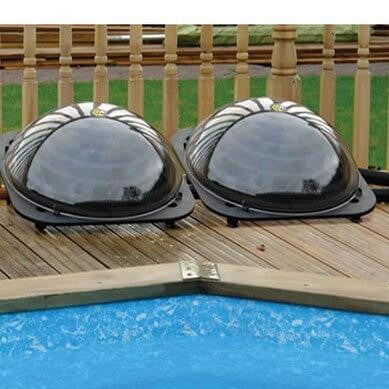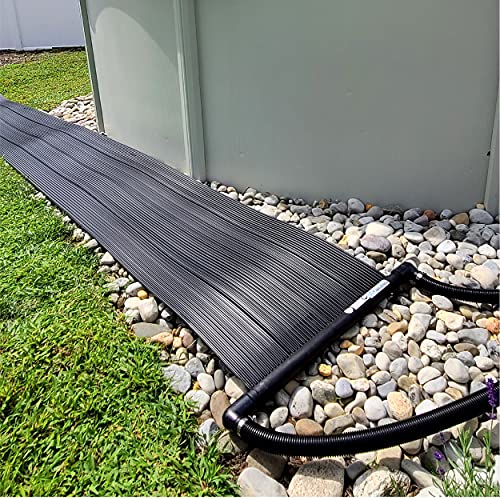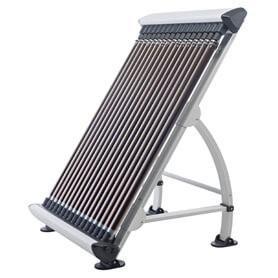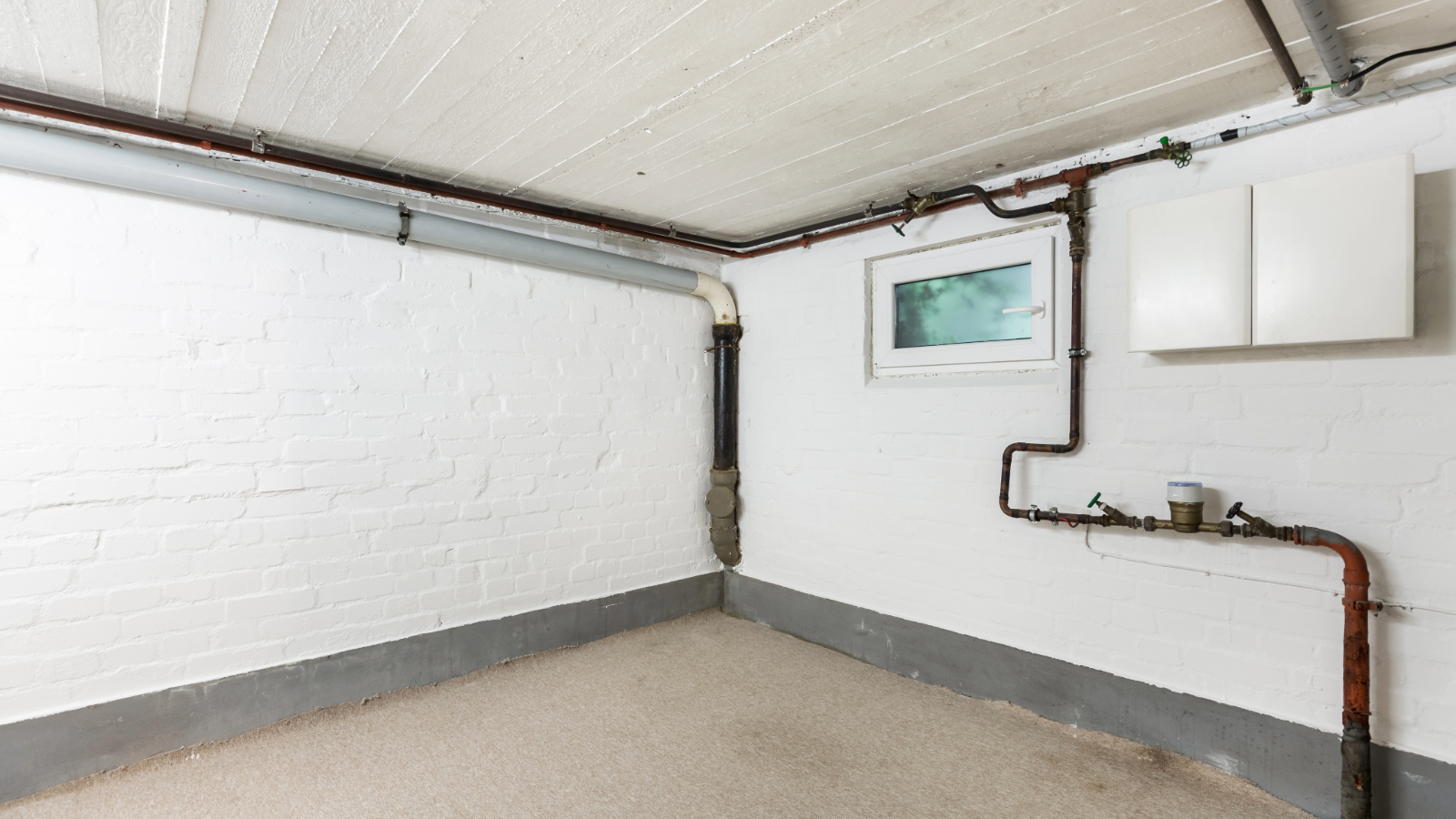Solar panels for swimming pools — your options explained
If you're considering solar panels for swimming pools we've rounded up the different types available so you can choose which one is right for you
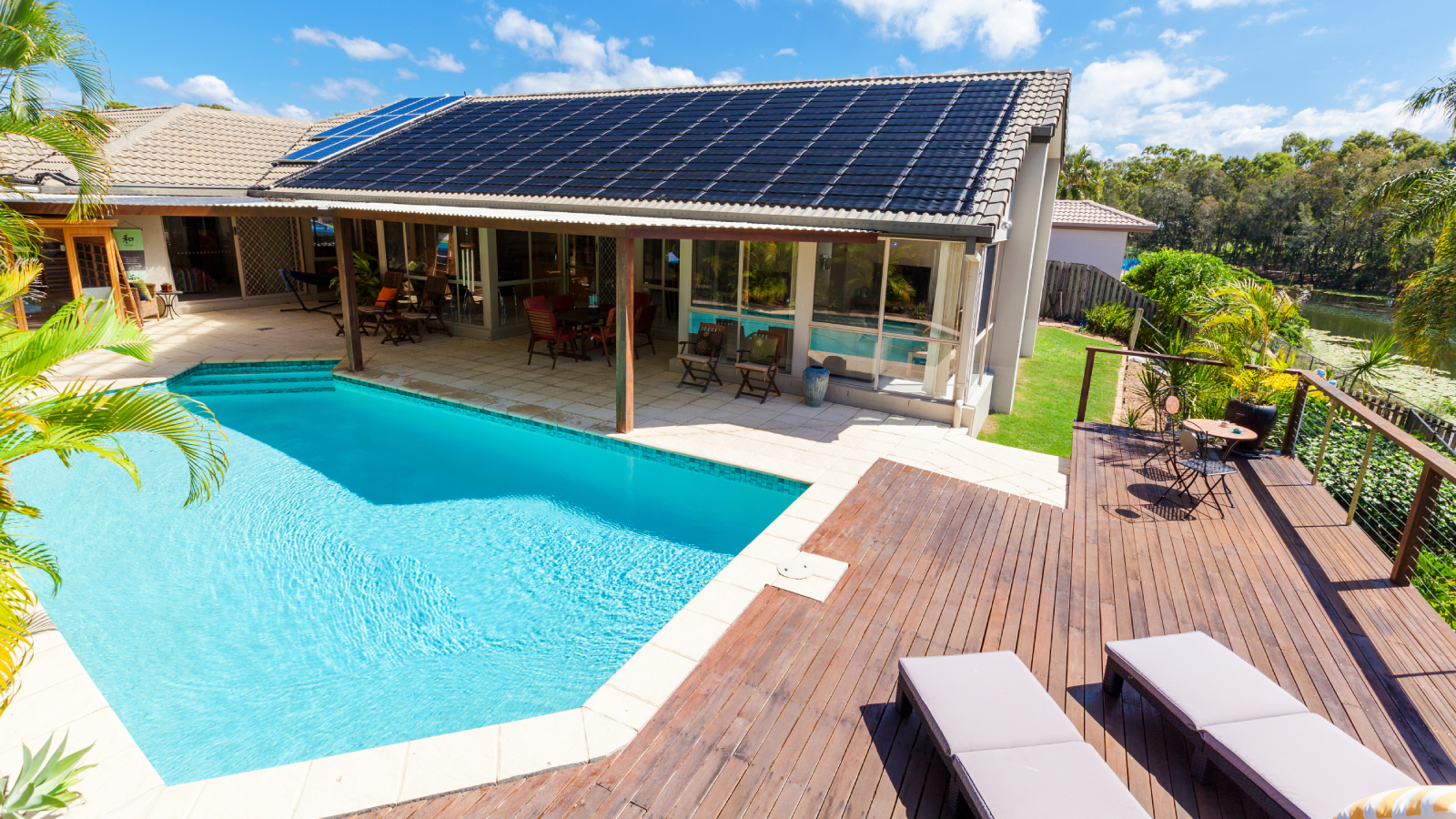
Solar panels for swimming pools is a combination that makes sense, especially if you're heating a pool that you mainly use during the summer. With daylight in greater abundance during this time, using renewable energy can help cut the expensive costs of heating the water.
But are solar panels for swimming pools all the same, do they work in a similar way to solar panels for your home and how do you choose which ones to install?
We take a dive into the world of solar panels for swimming pools to find out what options exist so you don't have to flounder in the deep end.
Solar panels for swimming pools for either electricity or heating
Installing solar panels for swimming pools involves a similar process to installing them on your home. Placed on a roof or on a purpose built ground frame, they come in two main versions, with a smaller DIY option for temporary above ground pools.
"Generally when people read solar they think of electrical energy," explains Andy Carr, COO & managing director of swimming pool company, Guncast. However, as well as solar pv, "there is also traditional solar thermal which heats water through black piping in a large panel arrangement. Both can benefit a pool either for the heating of the water, or for offsetting electrical loading."
Either way, when it comes to deciding how to heat a swimming pool, the system you choose will depend on a number of different variables and whether you are looking to integrate it with the rest of your home's energy needs or as a stand-alone solution.

Andy has over 30 years of experience in the construction industry which has helped build Guncast into the leading UK luxury swimming pool provider it is today.
Swimming Pool and Trade Association (SPATA) experts explain the basics
Solar pv for pools
Solar photovoltaic systems, which harness sunlight to create electricity to use in your home, work in exactly the same way for swimming pools. However, how you view the electricity they provide depends on whether you are adding solar panels purely to service a pool – be this indoor or outdoor – or if you already have solar pv and are adding the associated running costs to your existing energy bills.
Bring your dream home to life with expert advice, how to guides and design inspiration. Sign up for our newsletter and get two free tickets to a Homebuilding & Renovating Show near you.
Chris Hall, director at TBS Specialist Products explains: "If you are considering adding a swimming pool to your home and already have solar pv, it needs to be seen as a means of offsetting costs, rather than a direct source of electricity to a particular item or location. It can help balance out some of your extra overall running costs from adding the pool, but it essentially provides electricity for your home and pool.
"If on the other hand you are building a new pool house and want to add solar pv as an energy source, then you can view it slightly differently," he adds. "In this instance, you will be using the solar to power an electrical pool heat pump, as well as any other electrical load in the pool house, such as lights for example. And while it may not power it all, it will again act as a means of off-setting costs, but this time you know the costs are related specifically to the pool."
If your driving force behind choosing solar panels is environmental as well as economic, Chris says heat pumps for swimming pools, such as air source heat or ground source heat pumps are also worth combining with solar pv.
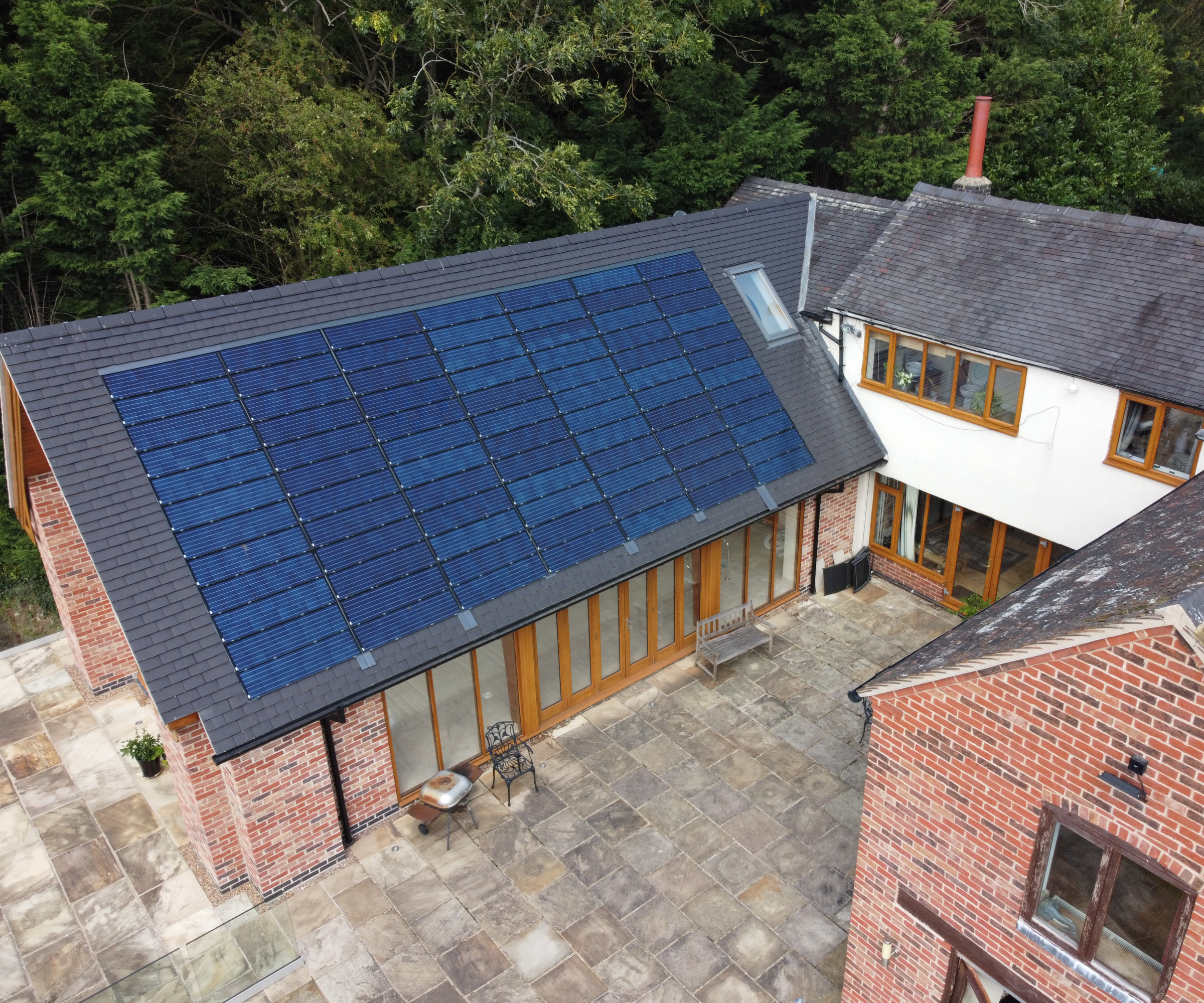
How many solar pv panels will you need?
In terms of knowing how many panels you need, this will depend on a number of variables, including the size of your pool, your lifestyle, how often you want to use the pool, if it's indoors or outdoors and the size of the heat pump needed.
A professional installation company will assess all of these elements in order to propose the size of your solar array, as well as providing estimates on how much power you can hope to generate.
The more panels you have, the more power you can generate, but if you are planning on adding a pool to a home that already uses solar pv, Andy Gunn reinforces Chris Hall's comments about how you view your investment into solar pv as it will ultimately affect your swimming pool costs.
"Whilst solar panels can be a great way to supplement electrical loading for swimming pools, it is important to look at this with the overall house and how this can effectively be achieved. Generally PV solar panels will not be able to provide enough power for a dedicated pool system," he says.
However, with the payback time for solar now around 6 years, Chris Hall notes how with lower install costs and the increased price of electricity, it's the off-setting of costs that brings dividends and potentially turns your expenditure into a worthwhile investment over time.

Chris is Director of TBS Specialist Products, a company supplying the widest range of solar pv options for over 11 years from their base in the Midlands. Chris has worked with solar for over 20 years and is a vast source of information on the subject.
Solar thermal for pools
The most popular choice of solar panels for pools comes in the form of solar thermal, also referred to as solar collectors. Duncan Lee, owner and Technical Director at Solar UK who manufacture their own LaZer2 panels, explains how the panels work.
"The solar panels are made from a series of tubes containing copper tubing, inside which is the heat transfer fluid. This heat transfer fluid extracts the heat collected in the solar panel and is pumped back to a heat exchanger where it is transfers the heat to the swimming pool water.
"It's four times as efficient as solar PV," adds Duncan, "and if you are purely looking for a means of heating your water, there is no better option."
Panels can be positioned on a roof or ground mounted, and although they don't have to be located next to the pool, Duncan notes how it's wise not to leave too much distance between the panels and pool to avoid excess heat loss in a longer run of pipework.
With pool use often seasonal, you may not notice if there are faults with the water heating or the transfer fluid not flowing correctly. Duncan's company has also recently launched a one of its kind WiFi monitoring system so that any problems can be identified off site. If the temperature of your solar collector suddenly rises or drops by too much, the company is notified and a site visit can be arranged.
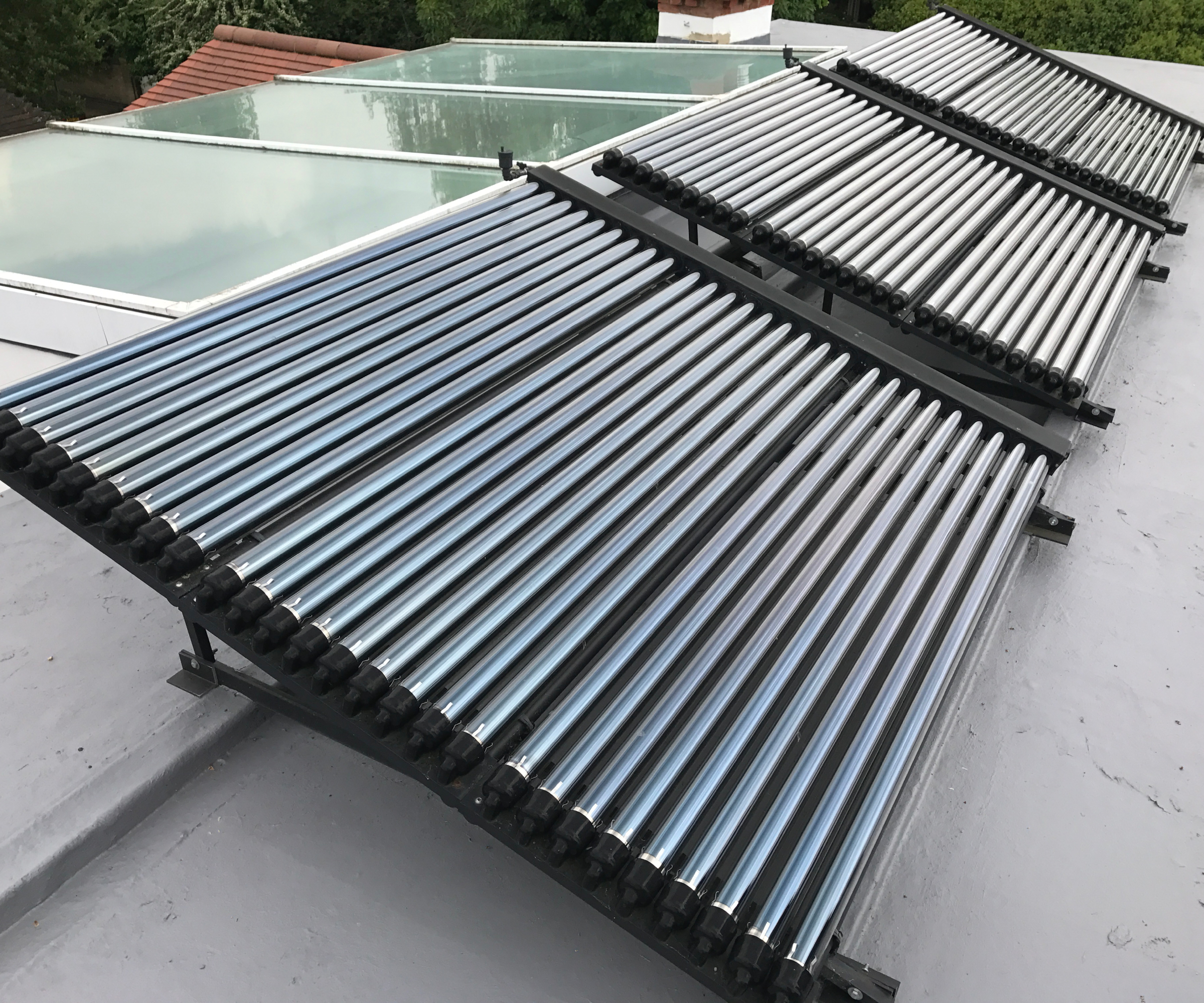
Calculating how many solar thermal panels you need
As with solar pv for swimming pools, knowing how many solar thermal panels you need can only be determined with a full evaluation of your swimming pool design and your projected use.
Factors such as size, location, roof suitability are all taken into account, as well as the number of users. "We have to take this into account," explains Duncan Lee, "as the more people there are in the pool, the quicker the heat will dissipate."
In general, standard pool solar collectors require a bank of panels that are normally over 25% of the surface area of the pool (vacuum tube collectors), depending on the location.
"Ideally, the bank should be optimised according to manufacturer’s instructions and are angled towards the sun," says SPATA. "It is possible that the distance between the filter pump and the panels may require a booster pump which may have to be taken into consideration when designing and siting such a system."
So, based on this estimate, for a 50 sqm pool for example, you would need at approximately 15 sqm of solar collector panels to help heat your pool. However, this may vary depending on how much sunlight the panels receive, the outdoor temperature, if your pool is indoors or outdoors and what you want the pool temperature to be.
A full site survey should always be conducted in order to specify your solar system correctly.

Duncan Lee is the owner and Technical Director at Solar UK as well as LaZer2, the company's in-house solar thermal system.
Solar pods and matting kits
If you're looking for cheaper solar panels for pools that can act as heating source for a temporary pool, solar panel pods or matting could be a budget-friendly option and one that you can install yourself.
Andy Carr shares a word of caution however if you are considering them for a more bespoke, high-end swimming pool. "These are not suitable for the pool market we operate in," he says. "However, they have their place to assist with temporary above ground pools and large paddling pools."
Solar pods are individual domed shape units that sit at floor level and can connect to your existing swimming pool pump. They service up to 4,500 gallons of water and units can be connected together to heat larger volumes of water. However, they are mainly designed as a top-up system rather than as the sole source of heat.
Solar matting kits – a cheaper version of solar collectors – can also be purchased and self installed. While they can be located on a roof, they can also be led on the floor. Once again, there are various conditions attached to their use and the extent of their functionality so should not be considered the only source of heating for your pool.
Smaller floor mounted solar thermal panels are also available but should only be considered an option if you are competent at DIY.
DIY solar pods and solar power kits available to purchase online
FAQs
How long does it take to install solar panels for swimming pools?
In both instances, you are looking at similar times for installing solar on a house. Duncan Lee tells us that aside from lead times, it's possible to have a system installed, commissioned and fully working on site within around four to five days.
How long do they last?
It's the same answer as you can expect for your home. In most instances, with the correct maintenance, care and regular servicing, the answer to how long do solar panels last is around 25 - 30 years.
Be sure to check any warranties for additional parts such as pumps and exchangers with your provider.
If you're still in the early stages of swimming pool research, find out how much space do you need for a swimming pool, discover what's involved when it comes to swimming pool planning permission and building regs and explore these swimming pool landscaping ideas for inspiration.

Sarah is Homebuilding & Renovating’s Assistant Editor and joined the team in 2024. An established homes and interiors writer, Sarah has renovated and extended a number of properties, including a listing building and renovation project that featured on Grand Designs. Although she said she would never buy a listed property again, she has recently purchased a Grade II listed apartment. As it had already been professionally renovated, she has instead set her sights on tackling some changes to improve the building’s energy efficiency, as well as adding some personal touches to the interior.

